The Real Reasons You Should Prepare: 20 Steps to Emergency Preparedness for Beginners
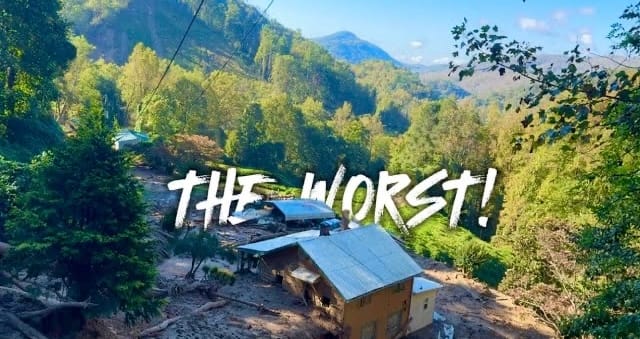
By: Jason Salyer On3 Ready
When Hurricane Helene tore through the mountains in 2024, I saw what real chaos looks like. What real SHTF was. This cemented why Preparedness is so important. Roads gone. Bridges ripped apart. Entire neighborhoods cut off from the world in minutes. Helene was unprecedented. Historic rainfall, sheets of water pouring down slopes, mudslides swallowing homes, and communication systems failing all at once.
I stood with people who described listening to the wind scream like something you’d hear in a horror movie. I spoke with a man who watched a family of ten swept away when the hillside above them let go. Another neighbor stood across what used to be a field but had morphed into a raging river, powerless to help. Again and again I heard the same quiet sentence:
“I never thought it would happen to me. I never thought it would hit here.”
Some people saw their beautiful front yards turn into deep canyons, raw earth torn open where their children once played. When a landslide or flash flood takes a house in seconds, there is no amount of sandbags or supplies that could stop it. Those events are less likely to occur, but they happen.
That is why preparedness is not just gear. It is the skill of staying calm, reacting fast, knowing where to run, and having a plan already in motion. You cannot control the storm but you can control what happens before and what you do next.
A lot of people never got a warning during Helene. Power failed. Cell towers failed. Alerts never reached them. That is why a NOAA weather radio matters. When phones die and towers collapse, radio keeps talking. Listening early and leaving early saves lives.
Many people do not know the right way to evacuate during a flash flood. One man we met while volunteering told us he watched his neighbors load their family into a vehicle, ten-year-old twins in the back seat, and drive toward the road where the water was already rising. He had spent years living an outdoor lifestyle and practicing preparedness, and he knew the water was climbing fast and fleeing in a vehicle was probably not the best option.
He climbed out his second-story window and jumped across what used to be his backyard but was now a fast, debris-filled current, then ran uphill on foot where he had moved his car just in case the storm got worse. His home was consumed by the monstrous waters. Tragically, the young family who left by car did not make it.
This is why flood evacuation matters. Only twelve inches of fast-moving water can float and push a small car off the road. At eighteen to twenty-four inches, trucks and SUVs can be lifted and carried away. Roads collapse, pavement washes out, and vehicles lose traction long before people realize they are in danger.
Vehicles get trapped. Water wins every time. I explain the safe ways to evacuate during rising flood conditions in this video:
Flash Flood Survival Tips
A lot of Americans still do not have a real plan. FEMA household surveys show that only about half of adults feel prepared, and even fewer have both supplies and a written plan. You can do better than that.
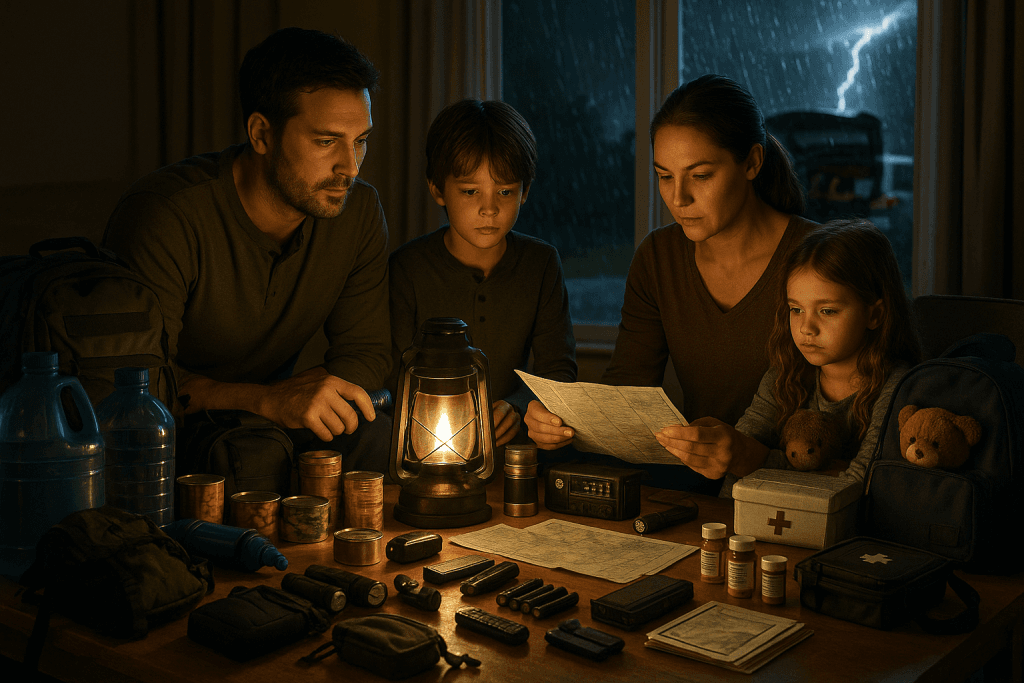
Join my Free On3 Ready Substack Newsletter and get my 72 Hour Survival Checklist
Preparedness is not just for storms. We have seen supply chain shortages, fuel shortages, inflation drive grocery prices out of reach, banks limit withdrawals, cyberattacks shut down critical systems, and grid failures hit without warning. Economic instability and financial disruption can leave stores empty and families struggling just as fast as a hurricane can.
Being prepared means being ready for storms, blackouts, financial shocks, food shortages, and unexpected life events. Preparedness is stability.
Why this matters now
Severe weather is increasing. Infrastructure fails faster than people expect. Supply chains break in hours. Emergency crews get overwhelmed instantly. During Helene, 200,000 people across the southern Appalachians lost power and communities all across lost access to clean water. Some communities didn't have power for over a month. Cell towers went down. Some areas survived for weeks on donated fuel and generators. Volunteers came from all over to help scrape mud, cut trees, and restore access. If a nationwide disaster ever happens, there may not be anyone left to come help.
Preparedness is not paranoia. It is freedom. These steps come from real disaster zones and real survival experience.
Below are the 20 most important steps to emergency preparedness for beginners.
1) Understand your regional risks

Where you live determines what you face. California means earthquakes, fires, mudslides, rolling blackouts, and drought. You can prepare, but you are preparing against multiple major threats at once. When my family moved to North Georgia, part of that decision was strategic. Georgia still has storms, tornadoes, heavy rain, and flooding, but the disasters are less frequent and usually less severe. Preparedness started with location.
Urban areas face water main failures, riots, and supply chain breakdowns.
Rural areas face isolation, limited hospitals, and delayed emergency response.
Action steps
• Look up your county on FEMA hazard maps
• Know your flood zones and nearest waterways
• Pay attention to historic wind and storm paths
• Identify the roads that wash out, ice over, or close during storms
The Federal Emergency Management Agency (FEMA) “National Risk Index” map covers 18 natural hazards for every U.S. county and census tract. FEMA Hazards+2FEMA Hazards+2
FEMA’s Flood Map Service Center shows official flood zones for your home and community. FEMA+1
The United States Geological Survey (USGS) earthquake hazard maps show how likely shaking is in your area and how it varies by location. FEMA+2USGS+2
FEMA’s wildfire risk map shows comparative risk for communities across the U.S. FEMA Hazards
2) Build a 72 hour survival bag

A real 72 hour bag should cover food, water, fire, shelter, security, communication, and first aid. It does not need to be expensive. It needs to be packed and ready. When roads close, stores empty, and power fails, you will not be able to shop.
Action steps
• Three days of food and water. I prefer freeze dried meals, jerky, canned meat and a Grayl water bottle with built in filter
• Poncho or tarp and blanket
• Flashlight or headlamp
• Power bank
• Radio for communication. I use Baofeng radios. Cheap and reliable
• First aid and medications
• Legal self defense tool
Field note: Some families who fled during flash floods, wild fires, and or mud slides did not stop to pack. They grabbed what was already prepared and left before the roads vanished. When your 72 hour bag is ready and your evacuation plan is set ahead of time, the worst day of your life can become survivable.
You can get the gear that I use for my 72 Hour Bag here: 72 Hour Bag and Gear
3) Secure water for short and long emergencies
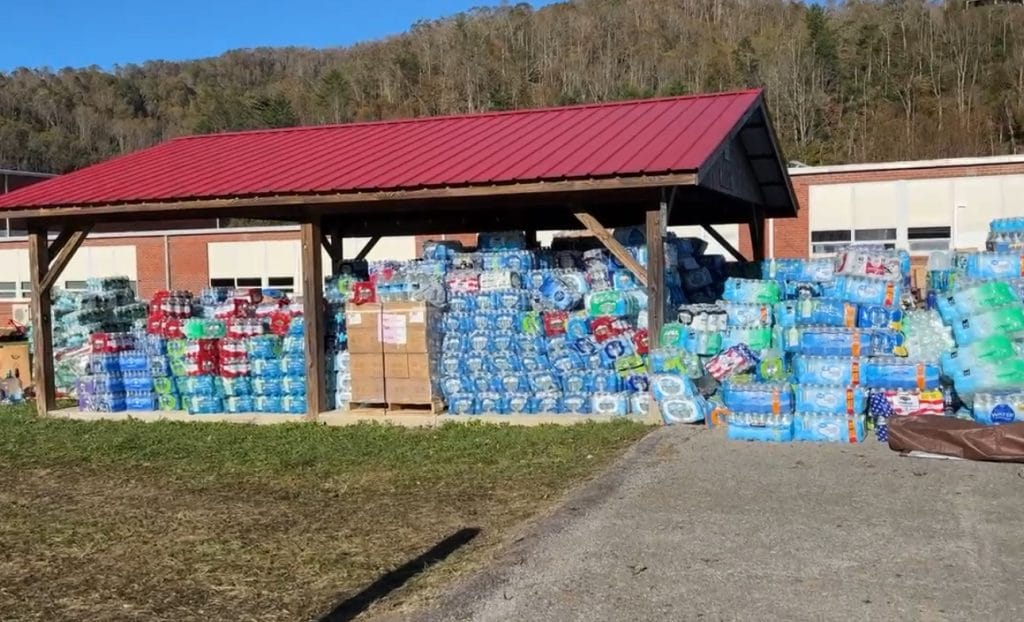
Begin with at least one gallon of water per person per day. A family of four needs a minimum of 28 gallons for one week. Store what you can, then add a way to filter and purify water you find. Water is the first supply to disappear when the grid fails or stores run empty.
Action steps
• Large water containers filled with clean tap water
• Bottled water for quick grab-and-go use
• Grayl purifier bottle or LifeStraw for treating water away from home
• Berkey countertop filter for long-term filtration
• Unscented household bleach as a backup method (8 drops per gallon)
Field note: After earthquakes, hurricanes, and large power outages, clean water becomes more valuable than cash. Store it before you need it, and have a way to make dirty water safe when your storage runs out.
4) Build affordable food storage
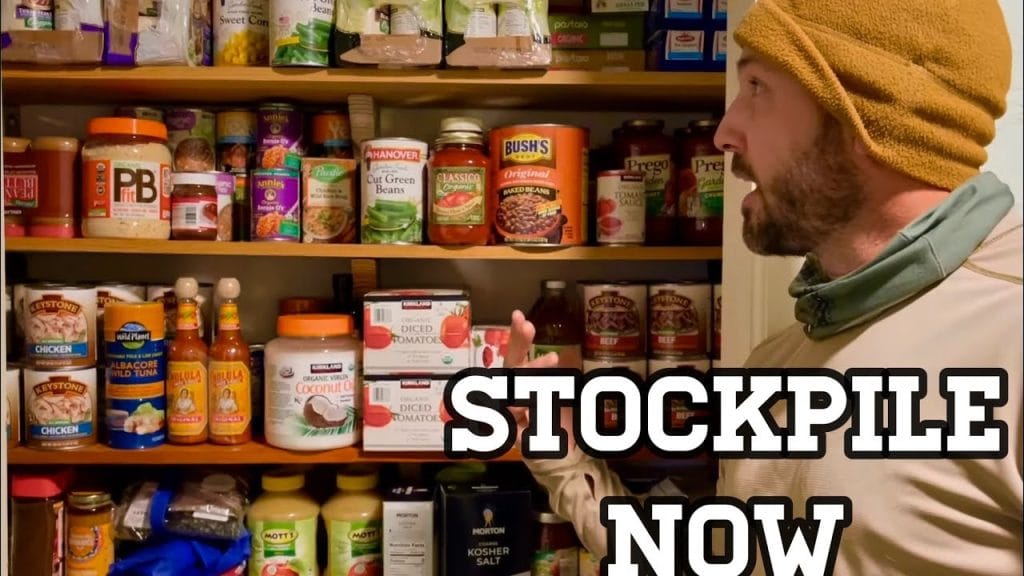
Stock food your family will actually eat. Start with low cost staples and add long shelf life items later.
Action steps
• Rice, beans and lentils in Mylar with oxygen absorbers
• Oats and Wheat Berries in mylar bags
• Peanut butter or nut butters of your preference
• Canned meats such as tuna, salmon, chicken and beef. Canned vegetables and fruits. Canned Soups
• Watch for BOGO sales to stretch your budget
• Add freeze dried meals later when you have the basics
Field note: A hot meal restores morale when everything else is falling apart.
5) Light keeps morale and safety
Darkness breeds panic. Light brings control.
Action steps
• Headlamps
• Lanterns
• Solar pathway lights as backups
• Rechargeable batteries and a charger
Field note: After 72 hours in the dark, people start to become way more anxious and stressed. Light makes a difference.
6) Communication saves lives

Phones fail. Towers fail. A radio keeps speaking.
Action steps
• NOAA weather radio
• Two way radios per family member
• Printed contact list
• Out of state contact for check ins
• Known meeting locations
Field note: Some survivors of Helene said they never got a warning. The cell towers were down and alerts never reached them. Weather radios and Baofeng radios do not rely on towers, which made them one of the biggest assets during the outage. But radios come with limits. In the mountains, signal can be blocked by ridgelines and tree-covered slopes. In the city, concrete and steel buildings reduce range. Even a two-mile radio can drop to a few blocks in dense areas. That is why you test now. Practice with your group so you know who you can reach, what channels work, and what your real communication distance is when the grid goes down.
7) Cash works when cards do not
Digital convenience disappears fast when the power goes out, systems crash, or banks limit withdrawals. In disasters, cyberattacks, economic instability, or civil unrest, fuel and food often become cash-only. ATMs can run out of money or be offline. Card readers stop working. Even if you have plenty of money in the bank, you may not be able to spend a dollar of it.
Action steps
• Keep small bills so you can pay without needing change
• Aim for $200 in ones, fives, and tens
• Split money between your wallet, your 72 hour bag, and your vehicle
• Store it in discreet locations, not all in one spot
• Replace it once or twice a year to keep it fresh and accessible
Field note: During multiple grid failures and supply shortages, we saw the same pattern: cash at 6 am kept generators running, kept medicine refrigerated, bought extra water, and paid for fuel when the power was out. Digital money is not real when the system is down. Cash or bartering supplies is instant negotiation
8) Your vehicle is your evacuation plan
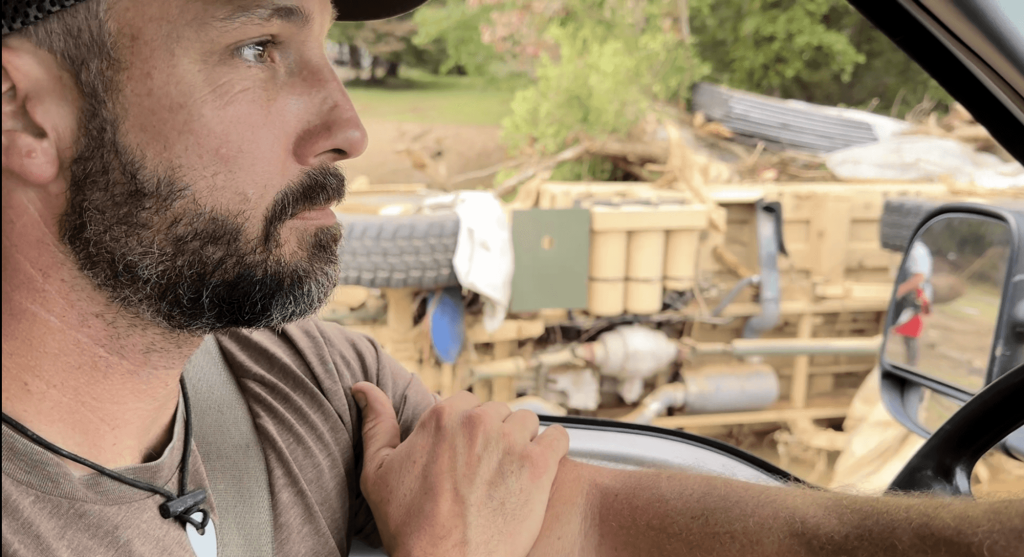
You may not be able to outrun some rising water or ice on foot, so your vehicle must be ready before the storm hits. Never assume you can “just drive out” once danger arrives. Roads close fast.
Many people in Atlanta’s 2014 ice storm were trapped on the highway overnight. Cars slid, froze, or ran out of fuel. Some people walked miles in freezing temperatures. Emergency crews could not reach everyone. A few people died from exposure because they had no heat, no fuel, and no supplies in their vehicle!
Make your vehicle a mobile shelter, not a cold trap.
Action steps
• Keep your fuel tank above half at all times
• Store blankets, hand warmers, winter hats, and gloves
• Keep jumper cables and a tire inflator
• Pack a full 72 hour bag in the trunk
• Add extra food, drinks, candy, and snacks for morale
• Store simple games or cards to keep kids calm if stuck for hours
• Carry a five gallon fuel can where legal
Field note: It does not take a blizzard to trap drivers. One jackknifed truck, one washed-out road, or a line of cars all trying to leave at once can leave you stranded. A vehicle stocked with warmth, water, and morale food turns a survival situation into a manageable one.
9) Shelter keeps you alive
Staying dry and warm is survival 101. Hypothermia does not require snow or extreme cold. It happens fast when you are wet, tired, and exposed. Even a mild rain and a cool night can turn into a medical emergency.
In-home shelter (power outage, extreme cold, storm damage)
• Safe heat source such as wood stoves where legal and inspected
• Indoor-safe propane heaters such as Buddy Heaters
• Heated blankets that run on portable power
• Power stations or battery banks to run heat sources during outages
• Close off one room to conserve warmth
• Hang blankets or use Foam pads over doorways to trap heat
• Cover windows and tile floors to stop heat loss
• Boil water on a camp stove if you have plenty of fuel and fill hot water bottles for sleeping warmth
• Keep everyone, including pets, in one room to share heat
• Layer clothing instead of one heavy layer. Wear hats to bed. People lose a lot of heat through the head
Out-of-house shelter (evacuation, stranded, or sleeping outdoors)
• Tarp or poncho for fast overhead cover
• Paracord for tie-downs and ridgelines
• Wool blanket that stays warm even when damp
• Quality sleeping bag rated for your climate
• Ground tarp or foam pad to stay off wet soil
• Hand warmers and contractor trash bags for emergency insulation
• Keep morale food like candy, cocoa packets, or snacks to calm the nerves
Field note: Hypothermia does not care if you are indoors or outside. A house without heat turns into a refrigerator when it's cold outside. Backup heat turns a power outage into an inconvenience instead of a survival problem.
10) Sanitation prevents disease
After water and shelter, sanitation is the next major line of defense. When toilets stop flushing, trash piles up, or water becomes contaminated, bacteria spreads quickly. Stomach illness, infected cuts, dehydration, and foodborne sickness can turn into medical emergencies fast, especially when hospitals are closed, roads are blocked, or ambulances cannot reach you.
This has happened after hurricanes, long-term power outages, earthquakes, and major floods. After Katrina and Maria, many homes survived the storm but families got sick afterward. After Helene, tornadoes, and the Kentucky floods, people had power issues, sewage backup, and contaminated groundwater. The storm often ends before the danger does.
Action steps (in home or shelter-in-place)
• Contractor-grade trash bags for waste, diapers, and dirty clothing
• Bleach, soap, disinfecting spray, gloves, and heavy-duty masks
• Baby wipes and hand sanitizer when water is limited
• Toilet paper and paper towels
• Five-gallon bucket with a tight lid and trash liners
• Kitty litter or sawdust to control odor and absorb moisture
• Keep trash secured so animals do not spread it
• Portable camp shower bags for basic hygiene
• Portable cassette or chemical toilets make sanitation manageable during long outages
Action steps (evacuation, vehicle, or camping)
• Portable potty or compact toilet bags
• Wag bags for travel or wilderness evacuation
• Disinfectant wipes and hand sanitizer
• Keep waste stored airtight until disposal is safe
• Separate clean water from sanitation gear at all times
Extra medical protection
• Activated charcoal for food poisoning or contaminated water
• Zeolites to help bind heavy metals and environmental toxins
• Oral rehydration salts or electrolyte packets
• Anti-diarrheal medicine (loperamide)
• Basic antibiotics if prescribed by a doctor
• Gloves, bandages, and antiseptic to clean even small cuts
Field note: In many disasters, the mud is cleared before the sickness is. A tiny cut becomes an infection. Diarrhea becomes dehydration. When medical access is limited, sanitation is not convenience. It can be life-saving medicine.
11) Build Power Backups
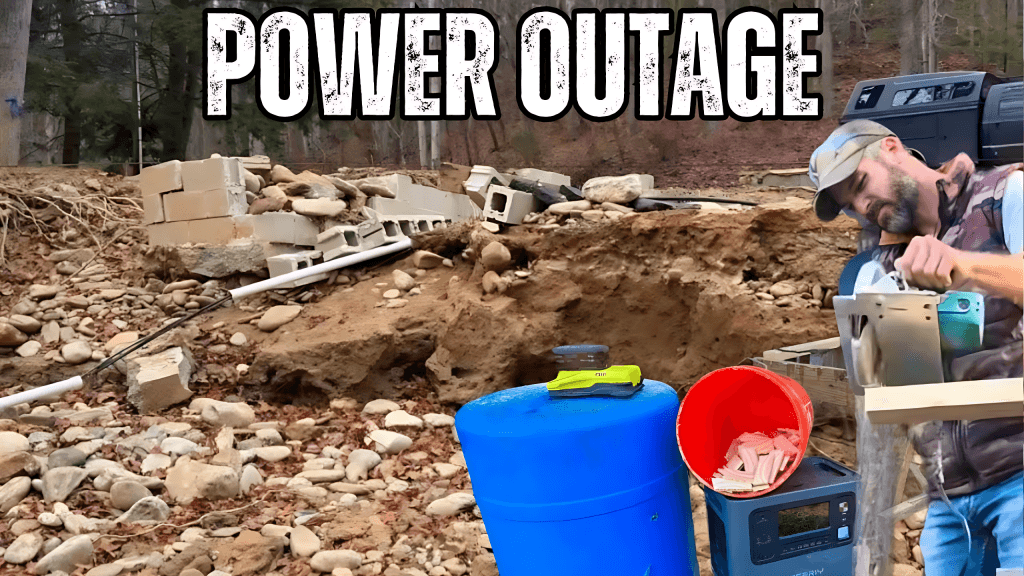
When the power goes out, life changes fast. Electricity keeps food cold, medicine safe, communication open, and medical devices working. You do not need everything at once. Build in stages as your budget allows.
Action steps
• Power banks or small power stations for phones, radios, lights, and heated blankets
• Solar panels or solar chargers to recharge batteries during long outages
• Larger power stations for refrigerators, CPAPs, oxygen concentrators, and medical equipment when budget allows
• Generator but they can be pricey and require skilled installation. Professional installation highly recommended
• Store fuel safely and rotate it every few months
• Keep extension cords, surge protectors, and charging cables ready
• Use heated blankets or small space heaters that run off portable power to conserve fuel
Additional items to consider when budget allows
• Extra gasoline cans stored legally and safely
• DC adapters for CPAP machines if applies
• Battery-powered fans or heaters depending on climate
• Car inverter so your vehicle can charge small devices
Field note: Ice storms have frozen cities in place. Heat waves have overloaded the grid and shut down entire blocks for days. Cyberattacks have taken out power, pipelines, and banking systems. Inflation and supply shortages have made generators and fuel hard to find. In every one of these situations, people with backup power and other preparations could keep their food safe, their phones charged, their medicine cold, and their medical devices working.
For anyone who relies on refrigeration or medical equipment, backup power should be at the top of their prepping. It is basic survival these days.
I remember dispatching volunteers on ATVs to a cut-off community to deliver a generator and fuel to a man who relied on an oxygen concentrator. His road was gone and emergency crews could not reach him. Without power, the machine could not run. For anyone who depends on medical equipment, backup power is not convenience. It is essential.
12) Medical skills matter
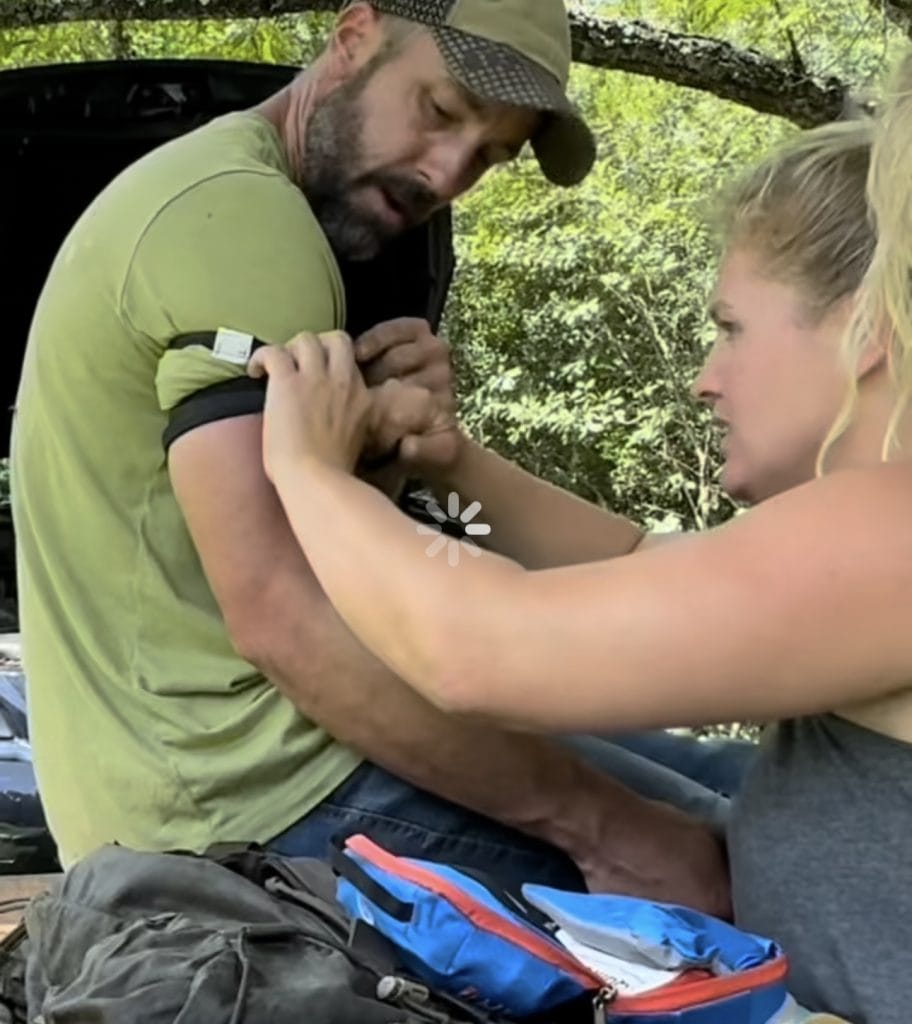
Learn before the emergency.
Action steps
• CPR certification
• Stop the Bleed training
• Israeli bandages and gauze
• Chest seals
• CAT or SOFT T tourniquet
• RAT tourniquet for children
• Pain and allergy medicine
• Ninety day supply of prescriptions if possible
Field note: The first time you apply a tourniquet should not be on someone you love in a critical situation.
13) Build a real community

A strong neighborhood can survive anything.
Action steps
• Know your neighbors
• Join local radio or preparedness groups
• Build mutual help agreements
• Identify friends with safe locations outside flood zones
Field note: After Helene, communities with strong connections recovered faster. They shared fuel, tools, generators, food, and labor.
14) Test yourself with a one-week challenge
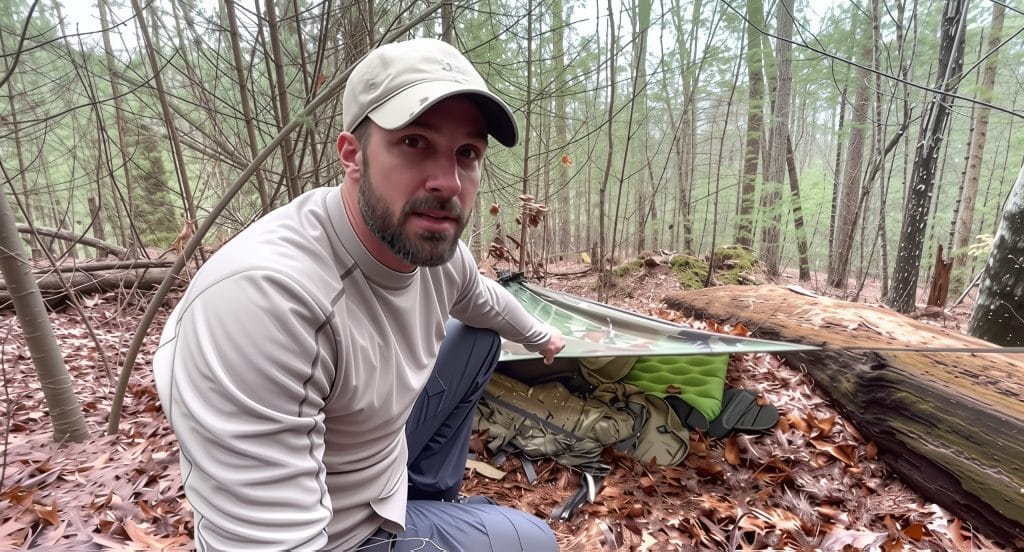
You only find holes in your plan once you live it.
Action steps
• No grocery store
• No takeout
• No running to buy batteries
• Drink only stored or treated water
• Write down what you run out of
Field note: Families who make it one week almost always discover the same thing...they were closer than they thought. With a few adjustments, you can probably scale to a month. Put in the training, gain the skills and right mindset.
15) Budget smart
Preparedness does not require a big bank account. You can build a strong foundation one month at a time, but a 72 hour bag for every person in your home should be built right now. It does not need to be fancy. A thrifted backpack with ramen, peanut butter, water, a poncho, socks, a flashlight, and basic first aid still keeps you alive. Imperfect preparation is better than no preparation.
Action steps
• Month 1: Extra food and water for the house and bottled water for the vehicle
• Month 2: Build or finish 72 hour bags for every family member
• Month 3: First aid supplies and essential medications
• Month 4: Lighting, batteries, and a power bank for phones or radios
• Month 5: Radios and backup communication
• Month 6: Upgrade warmth and shelter such as better sleeping bags, wool blankets, sturdier tarps, or insulated clothing
When the basics are covered
• Add portable power stations only when the budget allows
• Watch for buy one get one food sales
• Store rice, beans, canned meats, oats, and flour in long-term containers
• Add freeze-dried meals when prices drop or clearance hits
• Continue adding small items every grocery trip instead of buying everything at once
Field note: I have tested families with only the essentials in multiple simulated survival challenges. The families who stayed warm, hydrated, and fed were the ones who packed early and practiced. They learned what they needed to add and what was not necessary. You do not need every piece of gear. You need a plan, and you need supplies you can reach in seconds.
16) Train your body and mind

Skill beats equipment.
Action steps
• Carry water a distance
• Cook without power
• Sleep under the tarp in the rain
• Practice fire starting
Field note: You do not rise to the occasion. You fall to the level of your training.
17) Faith gives strength
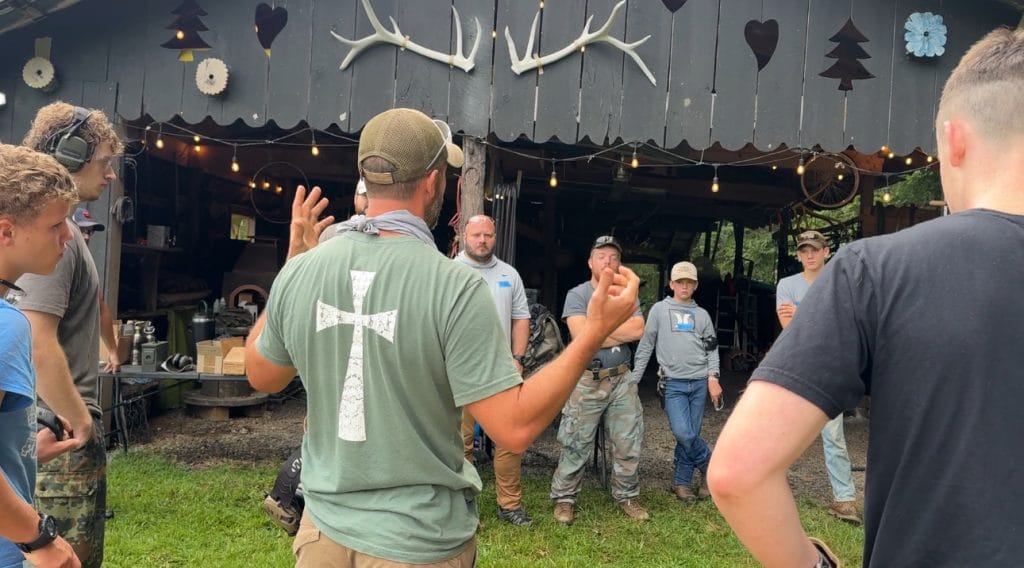
When life collapses, fear and panic make everything harder. Faith builds mental resilience, clear thinking, and the ability to lead your family with calm confidence. Preparedness is not just physical. It is emotional and spiritual.
Action steps
• Pray and stay rooted in scripture
• Stay grounded with gratitude instead of fear
• Keep a calm tone and clear head when others panic
• Lead your family by example with hope, not anxiety
• Remember panic solves nothing, preparation solves almost everything
Field note: Faith gave our family strength during one of the hardest seasons of our lives. My wife was injured and we faced a sudden financial shock. I became her full-time caretaker and could barely work a day or two a week. The only reason we made it through without fear was because our prepper pantry, long-term food storage, and simple emergency supplies carried us. We did not run out of food. We did not worry about groceries or bills. We had peace because we prepared before life went sideways. Faith and preparation work together.
18) Make preparedness a family skill
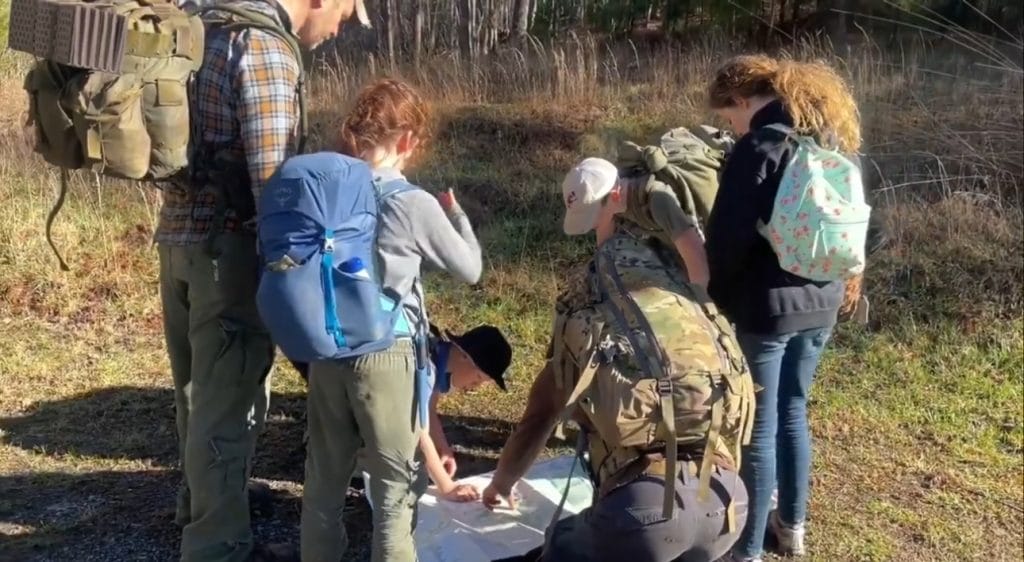
Prepared kids become capable adults. When everyone in the home knows what to do, emergencies are handled with less fear, more composure, and quicker decision-making. Preparedness is not about scaring children. It is about giving them responsibility and skills that make them feel secure.
Action steps
• Young children learn where flashlights, batteries, and radios are kept
• Older children pack and maintain their own 72 hour bags
• Practice fire safety and safe use of stoves, matches, or lanterns
• Everyone memorizes emergency contacts
• Everyone knows the primary and backup meeting spots
• Run simple drills such as quick evacuations or short power-out nights
Field note: During my survival challenges, the families who trained together responded faster and stayed calmer. Kids knew where their gear was, parents gave clear instructions, and everyone understood their role. The more a family practices, the fewer surprises there are when something goes wrong.
19) Maintain your readiness
A plan only works if it still works.
Action steps
• Rotate food and water
• Replace expired medicine
• Test batteries
• Check vehicle kit
• Update contact list
Field note: Set reminders for March, June, September, December.
20) Start today
Action beats intention.
Action steps
• Buy two cases of water
• Buy three days of food
• Charge every light and power bank
- Join like minded prepping groups
- Introduce yourselves to your neighbors if you haven't done so already
Field note: By tomorrow morning you will be more prepared than many Americans.
✅ FAQ: 20 Essential Preps For When Systems Fail
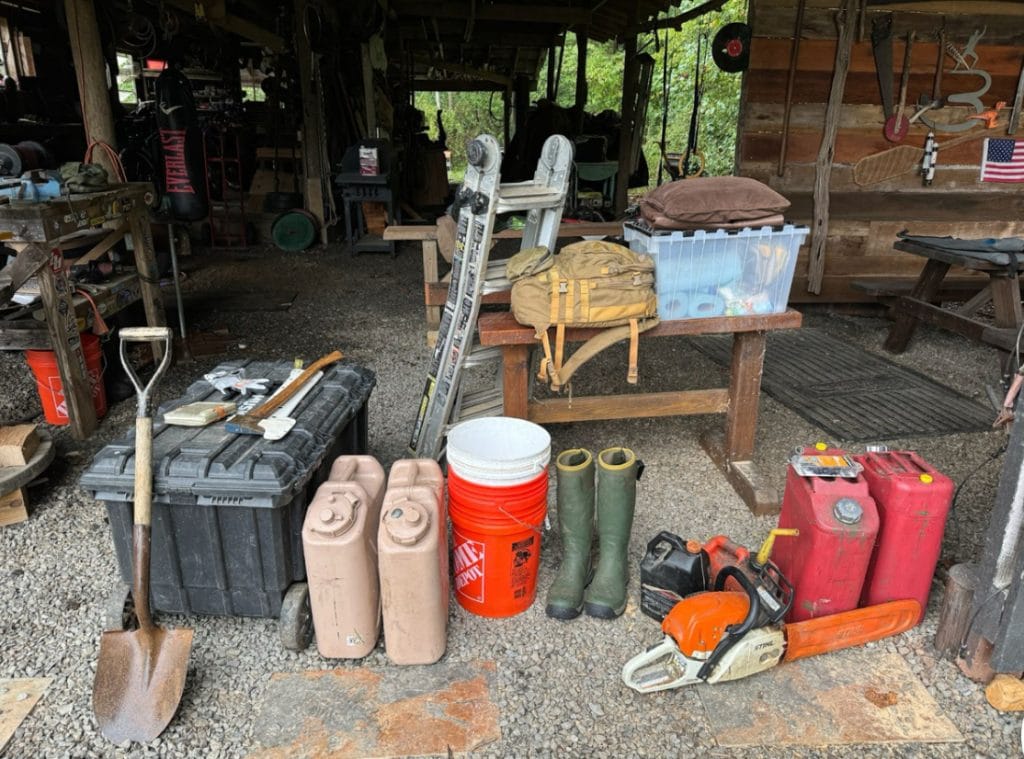
1. Why is it important to know my regional risks?
Because preparation isn’t one-size-fits-all. Coastal regions face hurricanes and storm surges, the West deals with drought and wildfires, the Midwest sees tornadoes, and northern states face dangerous winter grid failures. Knowing YOUR risks tells you what to prioritize.
2. How much water should a household store?
A minimum of 1 gallon per person per day, for at least 3 days, more if possible. Water storage is great, but water purification (filters, bleach, tablets, boil methods) gives you survivability beyond storage limits.
3. What foods last longest without refrigeration?
Rice, oats, canned meats, peanut butter, beans, pasta, dehydrated foods, instant potatoes, shelf-stable dry milk, tuna pouches, and freeze-dried meals. Rotate what you eat, no wasted money, no expired stock.
4. Why do I need backup lighting and heat?
Because most emergencies start as power outages. Flashlights, candles, propane heaters, solar lanterns, and battery banks prevent panic, accidents, and freezing nights.
5. What happens if cell towers fail?
Disasters often pause digital communication. Having NOAA radios, GMRS/FRS, CB, or HAM radios restores communication when phones and Wi-Fi are offline.
6. Why should I prep my vehicle?
Because vehicle evacuation is your fastest escape from disaster. Keep fuel topped up, tires ready, tools on board, first-aid, blankets, maps, and a small go-bag in the trunk.
7. What documents should I print?
8. Why include comfort items for kids?
Disasters are traumatic. A stuffed animal, blanket, book, or snack helps children stay calm, sleep better, and cope mentally.
9. Why link up with neighbors?
Because community is a survival tool. Neighbors share tools, medical skills, food, information, and security. Nobody thrives alone in a long disaster.
10. What’s the point of a “one-week off-grid test”?
It exposes weak spots BEFORE a real disaster hits. Every time families try it, they find something they forgot such as water, chargers, lighting, food, hygiene, or heating.
11. Do I need a first-aid kit beyond band-aids?
Yes. Include gloves, gauze, trauma pads, antiseptic, burn cream, pain relievers, tourniquet, medical tape, chest seal, and wound closure strips.
12. Should I prep for pets?
Absolutely. Food, water, medications, leashes, crates, and ID tags. Pets get evacuated too.
13. How often should I check my supplies?
Every 6 months or sooner rotate food, meds, batteries, kids’ clothing sizes, and expirations.
14. Why do I need tools and backup power?
You may need to cut debris, shut off utilities, heat food, or recharge devices. Power banks, generators, solar chargers, hand tools, and multi-tools keep things running.
15. Why store cash?
ATMs and card readers fail during blackouts. Cash still works.
Free checklist: Download my 72 Hour Survival Checklist when you join my Substack Newsletter and get weekly field tested strategies on ON3Ready.
This is how you protect your family.
Not someday. Today.
Share this article with fellow preppers who need to diversify their survival food supply and emergency preparedness plans. The community gets stronger when we share knowledge that works.
Internal Links
Why Trust This Guide?
I’m Jason Salyer, a former Human Performance Specialist for Naval Special Warfare and survival expert, sharing no-nonsense tips on my On3 YouTube channel and Substack. I have lived out what I preach! You can even watch where my survival skills were put to the test on History Channel's "Alone: The Beast" & National Geographics "Called To The Wild".
Gear and Resources
Explore the gear I personally use and trust.
Stay Prepared
Preparation is freedom. Do not wait for the grid to fail to figure out what you should have done. Start now. Train your body, build your get home bag, and learn how to move with confidence when everything else stops.
📩 Substack → On3Ready Newsletter
📺 YouTube → ON Three Channel
🔥 Patreon → Join On Three Community
🌲 Website → GoOn3.com
💪 Fitness → Go On Three Fitness
👕 Apparel → Shop Here
Legal Disclaimer
All content from ON3 Survival LLC, including but not limited to videos, articles, emails, courses, and in-person instruction, is for educational and informational purposes only. It is not legal, medical, financial, or professional advice. Emergency preparedness, fitness, tools, equipment, vehicles, and all survival-related activities involve risk. Always follow local laws, safety rules, and manufacturer guidelines. Consult licensed professionals when needed. By using this information, you take full responsibility for your actions. ON3 Survival LLC is not liable for injuries, damages, or losses that result from the use or misuse of any information or equipment.
Affiliate Disclosure
Some products mentioned may include affiliate links. If you purchase through those links, I may receive a small commission at no additional cost to you. I recommend products I trust, use, have field-tested, or that come recommended by reliable friends or professionals.
✅ Reference Sources




















